Since the early days of Batman: The Animated Series, we’ve seen a strong bond between “gal pals” Harley Quinn and Poison Ivy. It’s a friendship that expanded into other properties—including DC’s prime universe and animated films. In Jimmy Palmiotti and Amanda Conner’s Harley Quinn #25, Harley and Ivy’s relationship became much more than a friendship as the two shared their first on-panel kiss, confirming their once subtextual queer relationship decades in the making.
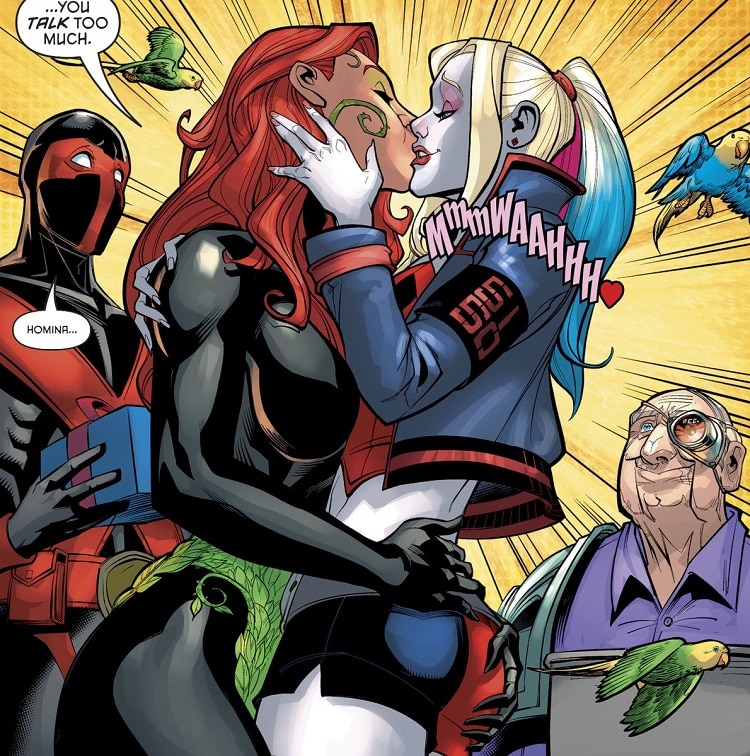
Following this first kiss, there have been a few Elseworlds storylines, including Injustice: Gods Among Us and DC’s Bombshells, featuring their romance, but few in-continuity stories took a deep dive into their newly formed relationship. Of course, while the comics may not fully tap into the potential of Harley Quinn and Poison Ivy’s coupling, the Harley Quinn animated series fully fleshes out their romance.
A Friendship That Became More
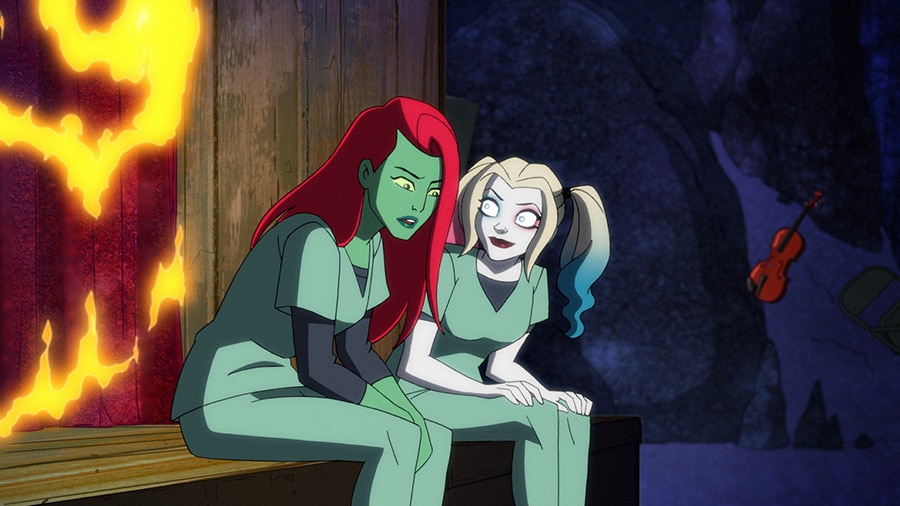
Harley Quinn finds success taking its time building the relationship between Harley and Ivy, with the pilot establishing that Ivy and Harley are best friends. After years of warning signs, Ivy is finally able to convince Harley to break off her toxic relationship with the Joker. The writers delicately make sure Ivy isn’t a rebound for Harley. The first season doesn’t focus on Ivy and Harley’s romantic relationship, but instead on their friendship.
It’s not until the second season that sparks begin to fly between the two best friends. In “There's No Place to Go But Down,” Ivy and Harley are sent to “The Pit," an inescapable prison run by Bane. Though not even a pit of despair is going to stop Harley and Ivy from coming up with a plan to escape—one that happens to involve George Lopez.
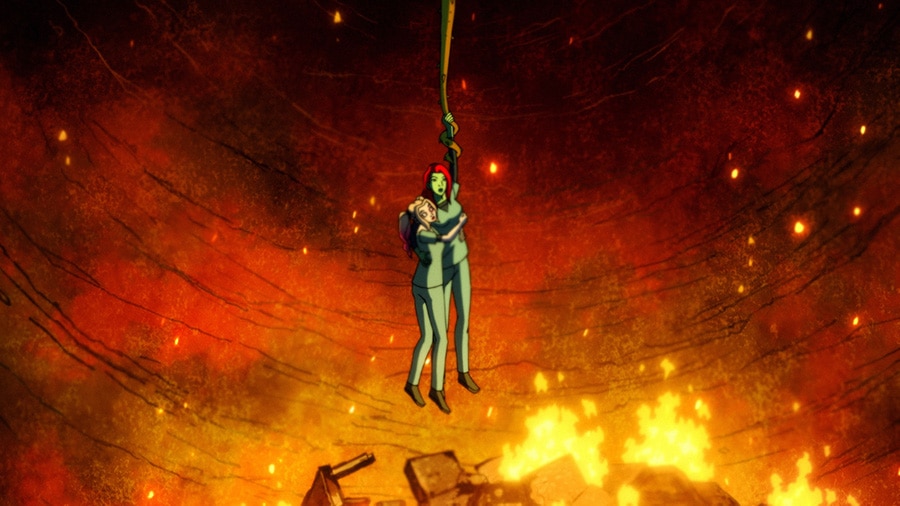
In a high-adrenaline exit, Ivy proves her loyalty to Harley by risking her own life to save her best friend. In the heat of the moment, Harley and Ivy share an intense kiss. Their romantic feelings for each other sneak up on them—exploring the messy emotions that come along with falling in love.
Harley quickly accepts that she has feelings for her best friend—Ivy does not. She’s getting married to Kite Man. Even if it’s not true love, it’s a low-maintenance relationship with a good guy, which is hard to come by within the villain community of Gotham. But most importantly, Ivy doesn’t want to ruin the friendship she has with Harley because she fears that, if they become something more, Harley’s rash personality will only end up breaking her heart—ruining the most sacred relationship she has in her life.
The Queer Relationship is the Main Plot
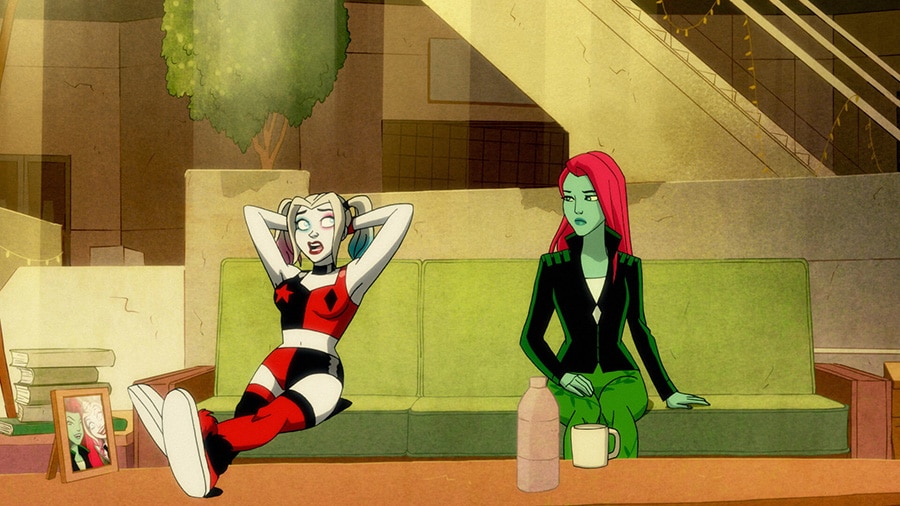
These turbulent feelings between Harley and Ivy become the driving narrative for the animated show’s second season. Contrary to Harley’s beliefs, this isn’t a story about Harley Quinn becoming the DC Universe’s greatest villain. The anarchy in Gotham, the villains’ new form of leadership, and Batman’s absence all play second fiddle to Harley and Ivy’s bond.
When a show's leads are super-villains, it's expected that the writers are going to break a few rules. Most superhero shows building up to their final act will focus on action instead of character. Harley Quinn does the exact opposite. The action pieces in season 2's final episodes aren’t the main focus, but are instead used to intensify the character beats in Harley and Ivy’s turbulent relationship as they figure out their feelings for each other.
There’s No Coming Out Story
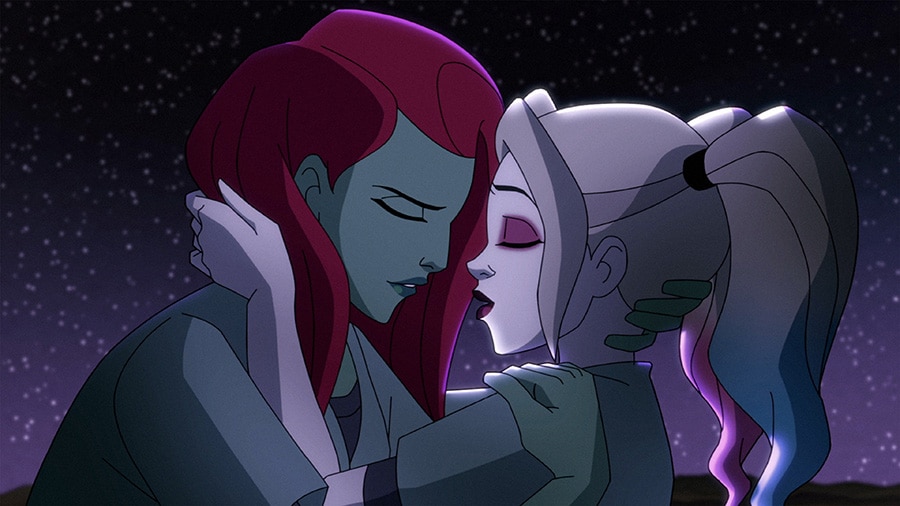
Harley Quinn season 2 is super queer, and *gasp* there’s no coming out story. I personally love these narratives and I don’t feel like every type of coming out story has been told on TV or in other media. But I do believe there’s a power in not needing a coming out story. Many queer narratives are defined by this trope—as if it’s the only type of story that can be told with a queer character, which is obviously not true.
There’s never a moment that Harley or Ivy have to “come out," but that doesn’t mean their queerness is ignored. There’s even a moment when Harley tries to lighten the mood and tells Ivy, “You’re here, you’re queer. Get used to it.” Harley Quinn is a testament not only to how the comics and future Bat shows should handle Harley and Ivy’s romance, but also a perfect example of how other TV shows should tell their queer storylines.
Harley Quinn's first two seasons are now on HBO Max and DC Universe. Visit our official Harley Quinn page for more news, videos and features on the animated Gotham City troublemaker.
Kat Calamia writes about TV, animation and comics. Check her out on YouTube and follow her on Twitter at @ComicUno.




















